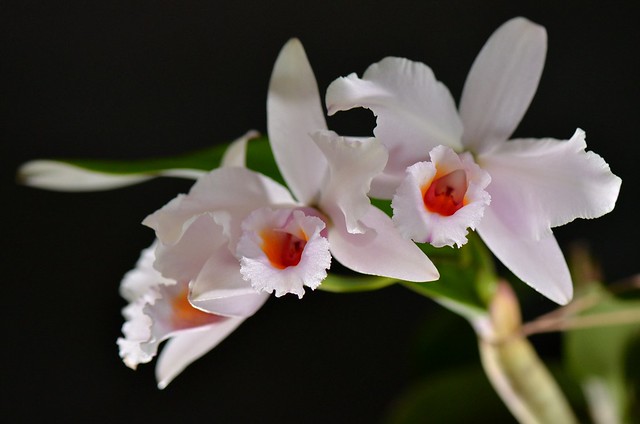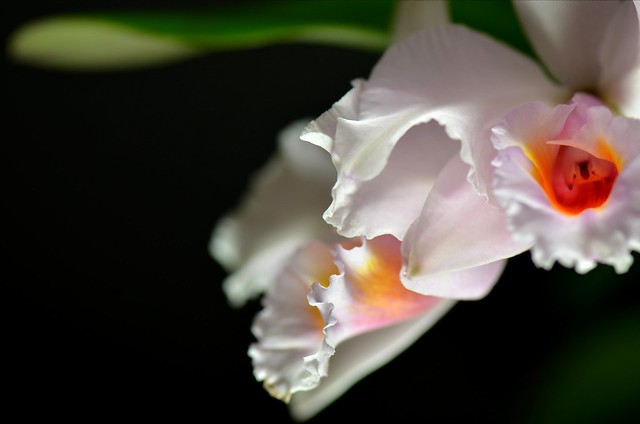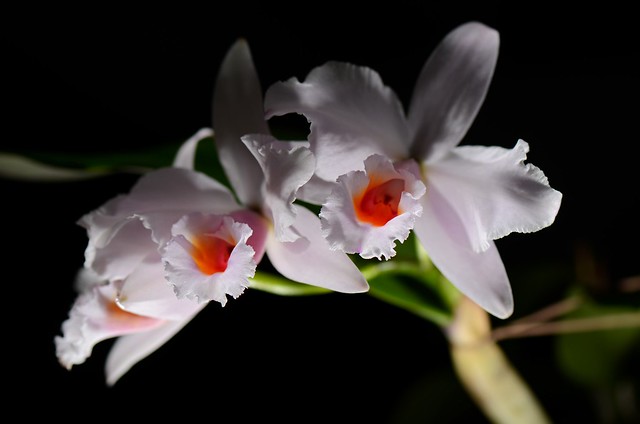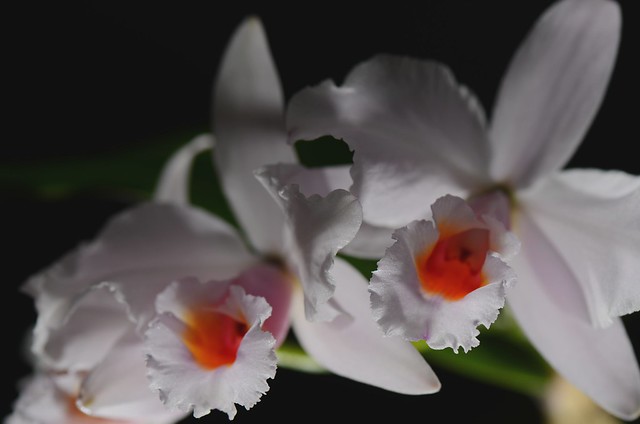nice pics, (john?)
I have to agree that before I bought my first digital camera I saw pictures taken of orchids like calypso bulbosa that looked almost perfect; color and sharpness were very nice. so, I thought that a higher-end camera that I could put my macro lenses on would have amazing pictures. when this didn't happen and I found out that I had to do a lot of editing after buying the expensive digital camera, I was quite disappointed. some of the small point and shoot cameras seemed to have better picture quality than 'better' cameras. one thing to remember is that no matter how expensive the camera, the lens makes all the difference in the world as to how good the image will be. also, on small point and shoot digital cameras, there is software on the camera/phone that sharpens and picks the right color scheme to try and represent the pixels that were captured on the light plate. on a fancier camera, you are given the option of choosing a color/light scheme or taking a 'raw' image and then editing it yourself to try and duplicate what the camera saw from the light entering the camera. since a point and shoot or phone has a tiny lens, it's possible to make it very nice quality with good coatings to allow the proper light to enter the lens, and make it affordable. with a big lens, there is more volume and area that needs to be made so it is more expensive to make a really 'good' lens. I still don't understand why a cheap camera can turn out pictures with proper color while a fancier camera often can't.....
about your pictures, they are nice. often things in pictures aren't lit from beneath, especially faces as that can make macabre images (for faces), but can be used for artistic, creative effect with flowers and other things. they are nice flowers, and look very nice in your images. from your lighting and focus, it seems as if you are trying to emphasize the colors of the lip, which are very nice, while you are de-emphasizing the rest of the flowers. it is a nice effect, but taking a picture with some light from the front or above would also be nice to show the whole face of the flower (just having one lit from the front so that we can see the different aspects of the flowers). it is something that is neither wrong nor right, and is different than how most usually display flowers in images. they are very nice flowers!
also another point is that when you are back, taking a 'distant' image of some flowers, the details aren't up close so that sharpening or contrast isn't as hard to do properly. when you get much closer, the clarity of the lens becomes more important as well as the f-stop or opening of the inside of the lens. when very close, there are more details that are much finer, and harder to capture on pixels in an image. any certain lens will have a certain lens opening or f-stop where the contrast of the details will be at their best; it will be different for each lens, though I think my 105 and 40 mm macros are best defined at around f11 or so, according to the literature of the company that made them and a macro photography book I have read. if you have poor quality glass and/or coatings on the lens parts, then the colors won't reproduce adequately on the image plate in the camera, and will be difficult to reproduce on your computer or printer. since different colors focus at different wavelengths, and the compounds used to make lenses will refract light differently, coatings are used to bend all of the light so that they all hit the image plate at the same time (are all in focus). if they don't, then different colors will be in and out of focus, making parts of the image fuzzy. so with any camera system, good glass is highly important!
also when using the bigger more expensive camera for a very close-up image of tiny plants, you will have to make sure that the camera moves not at all, and the plant/flowers move not at all. the shutter can make the rest of the camera move, and if not using a solid tripod with a shutter release, or using a feature that holds the internal reflector up before opening the shutter, there can be minute camera shake. so using a solid tripod, shutter release and a mirror-up function can all help to make the small flowers clearer. also the f/stop makes a difference in how clear a very close-up image will appear in focus. when you are further away, the depth of field or the area that is in focus, will be deeper. the closer you move to your subject the depth of field can decrease. the higher number you use as an f/stop (like f/11, f16 f22) the deeper this field of proper focus will be. a very low number for fstop means the depth of field will be very shallow and things in front and behind will be more out of focus. if you move back a little so that the flower doesn't fill the viewfinder, and then zoom in a bit when editing on your computer, there will be a greater depth of field also. at some point if you zoom too much then you will lose image quality
I guess that's more than enough for one post!











